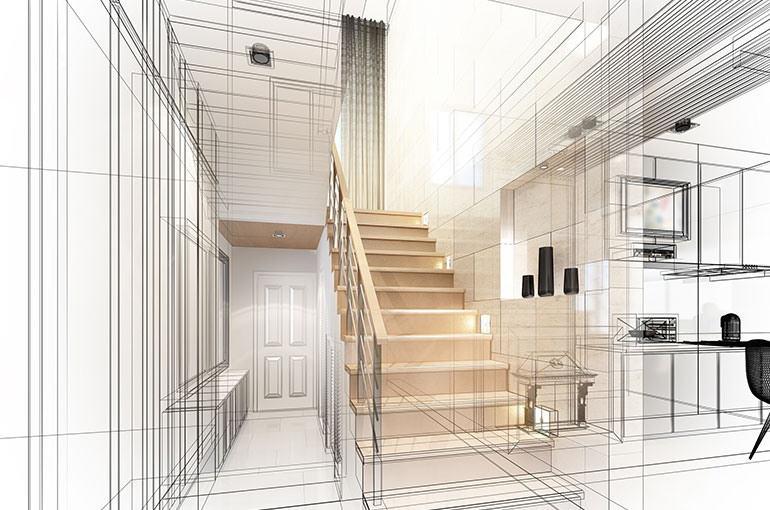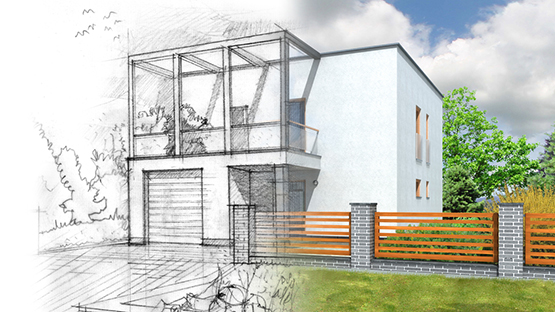Exactly How CDA Architects Include Eco-Friendly Practices in Architectural Projects
Exactly How CDA Architects Include Eco-Friendly Practices in Architectural Projects
Blog Article
The Influence of Technological Developments on the Design Practices of Contemporary Architects
The quick development of technical tools has actually dramatically improved the design landscape for contemporary engineers, cultivating unmatched levels of innovation and sustainability. The combination of Building Info Modeling (BIM), parametric style, and expert system has not just streamlined cooperation among diverse teams yet likewise redefined task implementation. As engineers accept these improvements, they are confronted with complicated difficulties that might affect their imaginative procedures. Discovering these dynamics discloses a nuanced interplay in between technology and typical layout methodologies, prompting a more detailed assessment of what the future holds for architectural methods.
Advancement of Architectural Equipment
Just how have architectural tools changed the style and building procedures over the centuries? The development of architectural tools has actually substantially impacted the efficiency, precision, and creative thinking of style and building and construction.
With the development of the Renaissance, the introduction of the compass and the protractor marked a pivotal shift. These devices allowed designers to achieve higher accuracy in their designs, helping with the appearance of even more elaborate and proportional structures (cda architects). The Industrial Change better changed building experiment the introduction of mechanical tools and products, enabling larger and extra ambitious projects
In the 20th century, the advancement of computer-aided style (CAD) software program changed the landscape once more, providing designers with unmatched capacities in modeling and visualization. Today, advanced devices such as Structure Details Modeling (BIM) and parametric layout software application proceed to push the borders of building technology, allowing a more incorporated method to style and building and construction processes.

Enhanced Collaboration in Style
As technology remains to evolve, improved partnership in layout has actually become a cornerstone of modern-day building method. The combination of digital devices such as Building Information Modeling (BIM), cloud-based platforms, and progressed visualization software application has changed the way architects, engineers, and stakeholders connect throughout the design process. These devices facilitate real-time communication, enabling teams to share concepts, adjustments, and comments immediately, despite geographical place.
Additionally, online truth (VIRTUAL REALITY) and boosted reality (AR) have more enriched joint initiatives by enabling immersive experiences that permit customers and group members to imagine jobs in a much more engaging way. This level of communication not just boosts understanding yet additionally promotes a sense of ownership among stakeholders, resulting in more informed decision-making.
Additionally, interdisciplinary partnership has actually been structured via these technological improvements, allowing architects to function more carefully with other experts, such as metropolitan coordinators and ecological consultants. The result is a more natural strategy to make that thinks about various viewpoints and expertise. Inevitably, enhanced partnership in design is not merely a fad; it is vital for creating innovative, useful, and visually pleasing style in a progressively complicated world.
Sustainability Through Modern Technology
Sustainability in design has progressively come to be linked with technological development, driving the market towards ecologically liable techniques - cda architects. Contemporary designers are leveraging sophisticated modern technologies to decrease environmental influence while improving the efficiency of buildings. One popular example is using Structure Info Modeling (BIM), which allows for accurate planning and source allowance, lowering waste throughout building and advertising energy efficiency throughout a building's lifecycle
Furthermore, smart products and energy-efficient systems are being integrated into designs to maximize resource usage. Technologies such as solar batteries and environment-friendly roofing systems harness renewable resource sources, adding to minimized carbon footprints. Furthermore, the application of fabricated intelligence in layout procedures enables designers to mimic and examine power consumption, assisting choices towards even more lasting end results.
The assimilation of lasting innovations not you can check here just straightens with worldwide environmental goals but also satisfies an enhancing demand from customers for environment-friendly services. As engineers embrace these advancements, the focus shifts in the direction of creating rooms that are not just cosmetically pleasing but additionally functionally sustainable, therefore redefining the standards of modern architecture. This way, modern technology works as a stimulant for sustainability, enabling engineers to design buildings that respect and enhance the native environment.
Challenges in Execution
While technical innovations in style hold terrific promise for improving sustainability, their execution frequently encounters significant difficulties. One key barrier is the high discovering contour connected with new modern technologies. Architects and building experts might need substantial training to successfully use innovative software application and tools, which can delay task timelines and increase prices.
Additionally, the assimilation of arising technologies, such as Building Info Modeling (BIM) and sustainable materials, typically requires collaboration throughout multidisciplinary teams. This cooperation can be hindered by distinctions in knowledge, workflows, and interaction styles, causing possible conflicts and inadequacies.
Financial constraints even more complicate the fostering of ingenious innovations. Several architectural companies, particularly smaller sized ones, may lack the sources to invest in innovative devices, limiting their capability to contend with bigger firms that can manage such financial investments.
Furthermore, governing frameworks and building ordinance might not maintain speed with technical developments, developing uncertainty and potential conformity issues. This difficulty can discourage architects from fully welcoming brand-new innovations, as the risk of non-compliance might outweigh the benefits. Addressing these implementation obstacles is important for the effective combination of technological innovations in modern architectural techniques.
Future Trends in Design
The challenges related to the application of brand-new innovations in design have actually triggered a reevaluation of future patterns within the industry. As engineers browse problems such as sustainability, urbanization, and social equity, they are progressively adopting ingenious innovations to enhance layout performance and environmental efficiency.
One popular fad is the assimilation of expert system (AI) in the style procedure. AI tools can evaluate huge datasets to notify layout choices, improving both imagination and performance. In A Similar Way, Structure Info Modeling (BIM) remains to develop, making it possible for real-time partnership linked here among stakeholders and helping with streamlined task management.
Lasting style methods are likewise getting energy, with engineers concentrating on useful reference flexible reuse and regenerative layout principles that lessen resource usage and waste. The incorporation of clever materials and sustainable energy resources will certainly further enhance the strength of structures despite climate modification.
Additionally, the increase of parametric layout permits for more tailored and context-sensitive building options. By using these developments, designers are poised to develop built settings that not only deal with the immediate needs of culture yet likewise expect future difficulties, thus redefining the role of style in an ever-changing globe.
Conclusion

Report this page